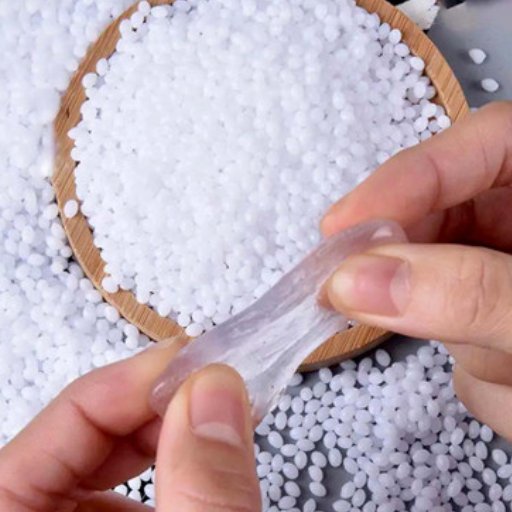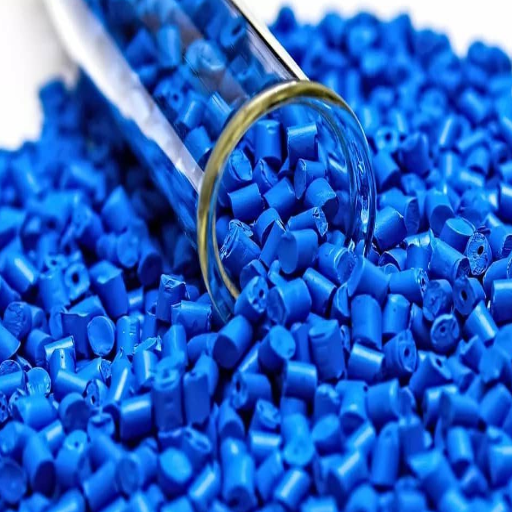Both in the workplace and in educational institutions, water bottles made of plastic rank very high due to their easy to carry convenience features. However, not all types of plastic are beneficial, and if you wish to reuse them, it is wise to understand the different classifications of plastic that mlade the bottles. I will analyze various types of water bottles with regards to their materials, safety, environmental impact, and overall health sustainability. I plan to identify the types of plastic used in the bottled water contenders reusable without risk, how to determine them, and provide steps to achieving personal health and environmental goals. Along with these steps, any person wanting to reduce the effects of their consumer choices on the environment will have a better idea on how to use their guided purchasing decisions effectively.
What Types of Plastic Are Used in Water Bottles?
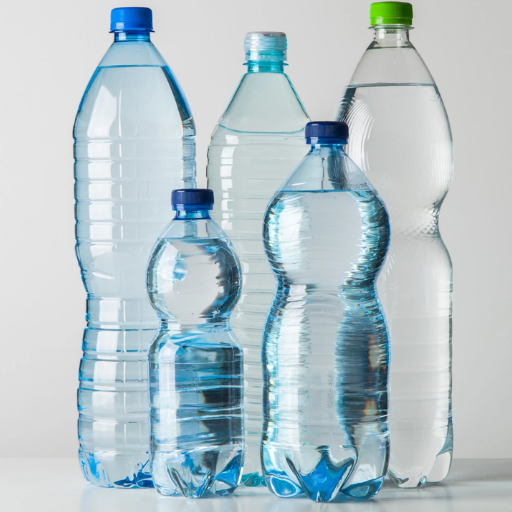
Water bottles are typically made from a variety of plastics, each with unique properties and uses. The most common types include:
Polyethylene Terephthalate (PET or PETE): Widely used for single-use bottles, PET is lightweight, clear, and strong. It is recyclable but not recommended for repeated use due to potential leaching over time.
High-Density Polyethylene (HDPE): Durable and non-toxic, HDPE is often used for reusable water bottles. It is resistant to chemicals and fairly easy to recycle.
Polycarbonate (PC): Found in some reusable water bottles, polycarbonate is strong and heat-resistant but has raised concerns due to the presence of BPA, a chemical linked to potential health risks.
Stainless Steel or Aluminum (with Plastic Coating): Although not entirely plastic, these bottles may have a plastic lining, such as epoxy resins, which should be BPA-free to ensure safety.
Each of these materials has varying levels of safety, durability, and recyclability, making it important to choose wisely based on your needs and concerns.
Understanding PET Plastic (Polyethylene Terephthalate) in Water Bottles
PET plastic, commonly used in water bottles, is lightweight, durable, and cost-effective, making it a popular choice for single-use containers. It is considered safe for food and drink products by the FDA and other regulatory bodies when used as intended. PET is recyclable, and its versatility allows it to be transformed into new products like clothing fibers or packaging materials, reducing waste when properly disposed of. However, concerns arise when PET bottles are repeatedly reused or exposed to high temperatures, as this can increase the potential for leaching chemicals like antimony into the water, though such risks are generally minimal under normal use. Proper recycling practices are essential to minimize environmental impact and promote sustainability.
Different Types of Plastic Used for Bottled Water Containers
Containers for bottled water are made from different types of plastic based on distinct needs, and each plastic type has different characteristics. The most common type is Polyethylene Terephthalate (PET), which is marked with the recycling code 1. PET is strong, clear, and light which makes it very useful in single-use bottles. Furthermore, it is PET is highly recyclable, but its environmental impacts varies based on how well it is recycled.
Also common in use is High Density Polyethylene (HDPE) with recycling code 2. This type of plastic is opaque, more durable, and impact-resistant said to be used widely for larger water containers. Its robust structure makes it suitable for reusable bottles and containers.
Finally, some bottled water containers are made of of Polylactic Acid (PLA) which is derived from corn starch or sugarcane. While PLA is advertised as eco-friendly, it only breaks down properly under specific industrial composting conditions. With these eco-sustainable materials, consumers will have the opportunity to support sustainability efforts and make eco-friendly decisions.
Common Plastic Materials in Disposable Water Bottles
Disposable water bottles are commonly made from three main types of plastic materials, each with unique properties and environmental impacts:
Polyethylene Terephthalate (PET or PETE)
PET is the most commonly used plastic for disposable water bottles due to its lightweight, durability, and recyclability. It is marked with the recycling code #1 and is considered safe for single use. PET is highly recyclable and often repurposed into products such as clothing fibers, carpets, or new containers, but improper disposal can contribute to environmental pollution.
High-Density Polyethylene (HDPE)
Found in some water bottles and beverage containers, HDPE is slightly more rigid than PET and carries the recycling code #2. It is non-toxic, resistant to heat and chemical damage, and widely recyclable. HDPE is less common than PET in bottled water but is valued for its toughness and lesser environmental impact due to recyclability.
Polycarbonate (PC)
Polycarbonate plastic, marked with the recycling code #7, is more often used in reusable water bottles but can occasionally be found in disposable products. It is lightweight, transparent, and shatter-resistant. However, concerns around BPA (a chemical sometimes found in PC plastics) have led to reduced usage in favor of safer alternatives.
These plastics have facilitated the mass production of disposable water bottles, but they also contribute to growing environmental challenges. Proper disposal, recycling, and shifting toward sustainable alternatives are critical steps for mitigating their impact.
How Can I Identify the Type of Plastic in My Water Bottle?
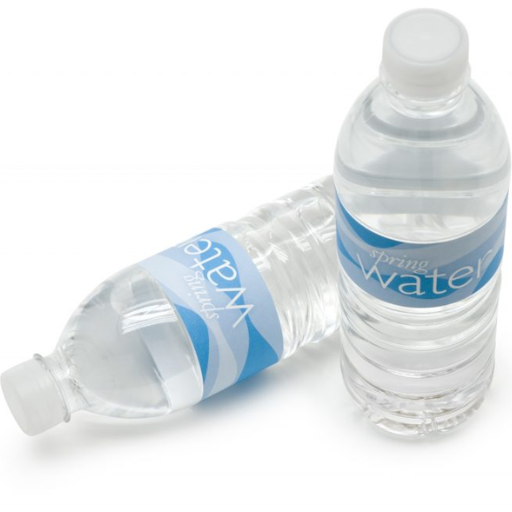
Most plastic products, including water bottles, include a resin identification code—typically a number from 1 to 7—inside a small recycling triangle symbol. This code indicates the type of plastic used. For example, 1 refers to PET (polyethylene terephthalate), commonly used in single-use bottles, while 7 often represents polycarbonate or other mixed materials. By checking the bottom or side of your bottle for this symbol, you can quickly determine the material it’s made from.
Decoding the Number of Plastic and Recycling Symbols
Certainly! When decoding plastic and recycling symbols, I focus on the resin identification codes, which explain the material my plastic is made from. Here’s a quick breakdown based on my understanding:
1 (PET): This is polyethylene terephthalate, often found in single-use water bottles and food packaging. It’s lightweight and recyclable.
2 (HDPE): High-density polyethylene, used in milk jugs and detergent bottles. It’s durable and widely accepted for recycling.
3 (PVC): Polyvinyl chloride, often seen in pipes and shrink wrap. Recycling options for this are limited.
4 (LDPE): Low-density polyethylene, found in plastic bags and films. While soft, it’s not always recyclable curbside.
5 (PP): Polypropylene, used in yogurt containers and bottle caps. It’s recyclable in many areas now.
6 (PS): Polystyrene, seen in foam cups and takeout containers. It’s tough to recycle and often avoided.
7 (Other): This category covers mixed plastics such as polycarbonate. These are harder to recycle, depending on local facilities.
By referencing these codes, I can make informed decisions about whether to recycle, reuse, or reduce my use of certain types of plastic. It’s a step toward more conscious consumption.
Understanding Plastic Types Used to Make Water Bottles
Water bottles are commonly made from three types of plastic, each with unique properties and environmental considerations:
1 (PET or PETE – Polyethylene Terephthalate): PET is the most commonly used plastic for single-use water bottles. It is lightweight, transparent, and designed for single-use purposes to maintain safety and hygiene. While PET is recyclable, improper disposal can lead to environmental pollution. Recycling PET helps reduce waste, as it can be transformed into new bottles, textiles, or packaging.
2 (HDPE – High-Density Polyethylene): HDPE is often used for reusable water bottles due to its durability and resistance to impact. It is also safe for food and beverage storage and is widely accepted at recycling facilities. HDPE contributes to reducing single-use plastic waste when used for durable, refillable containers.
7 (Other – Often Includes Polycarbonate): Polycarbonate is a common material for hard, reusable water bottles as it is tough and resistant to breakage. However, some polycarbonate plastics may contain BPA, a chemical that has raised health concerns. Alternatives labeled as BPA-free are recommended for safer use. This category can be harder to recycle, depending on local handling capabilities.
Understanding the plastics used in water bottles helps consumers make informed choices based on safety, environmental impact, and reusability, whether opting for recyclable single-use bottles or investing in durable, eco-friendly alternatives.
Comparing Different Types of Plastic Bottles and Containers
When comparing different types of plastic bottles and containers, I focus on safety, environmental impact, and reusability. For single-use bottles, PET (Polyethylene Terephthalate, #1) is common due to its lightweight and recyclability, but it’s best for one-time use to avoid leaching chemicals over time. HDPE (High-Density Polyethylene, #2) is another safe and durable choice, often used for milk jugs and refillable containers. BPA-free plastics, like Tritan, are excellent for reusable bottles, providing durability and safety without the risks associated with BPA. For a greener option, consider stainless steel or glass alternatives, which eliminate plastic entirely and are highly recyclable. By prioritizing materials that align with my values for health and sustainability, I make choices that are both practical and eco-friendly.
Are Plastic Water Bottles Safe to Reuse?
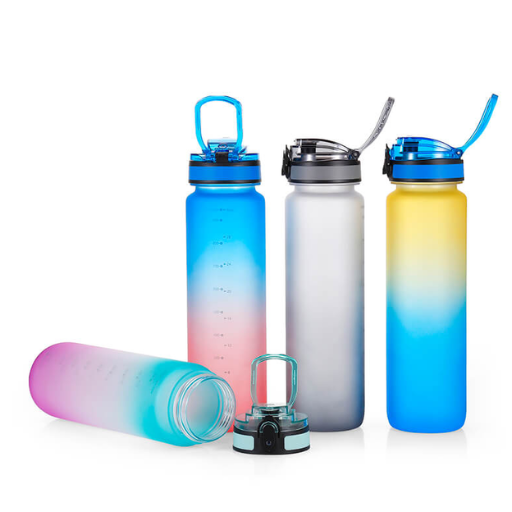
Reusing plastic water bottles can be safe, but it depends on the type of plastic and how the bottle is maintained. Many single-use bottles are made from PET (Polyethylene Terephthalate), which may degrade over time, especially if exposed to heat or sunlight. Repeated use without proper cleaning can lead to bacterial growth, posing health risks. Opt for reusable bottles made from BPA-free plastics, stainless steel, or glass, as they are designed for repeated use and are safer for both personal health and the environment. Always wash bottles thoroughly between uses to ensure hygiene.
Safety Concerns of Reusing Plastic Water Bottles
The process of reusing plastic water bottles, especially those made of PET, comes with a few safety concerns. Antimony and phthalates, for instance, dangerous chemicals, can leak into the water if the bottle is heated or left in the sun for an extended period. Moreover, most disposable bottles have poor designs that inhibit adequate cleaning, which fosters bacterial and fungal growth. These microorganisms can lead to health concerns like stomach problems. To reduce these risks, it is better to use reusable water bottles made of glass or stainless steel, as these materials lack BPA and are less likely to cause harm. Contamination can be avoided with proper hygiene practices.
Comparing Disposable vs. Reusable Plastic Water Bottles
Every type of water bottle, whether a disposable bottle or a reusable one, has its pros and cons. While being more convenient, disposable bottles also encourage pollution and are made from thinner materials. Comparably stronger plastics are used to make reusable plastic water bottles because they are designed for long-term use, making them more environmentally friendly than single-use bottles. Personally, I think the benefits of reusable water bottles regarding cutting down waste and cost over time is significant. However hygienic practices do require them to be washed on a regular basis. If your aim is sustainability, I recommend buying a good quality reusable cup. Although small, this change can greatly impact your body and enable you to support a good cause.
How Many Times Can Plastic Bottles Be Safely Reused
How many times a plastic bottle can be reused safely depends on the type and condition of the bottle. One-use, single use plastic bottles made out of polyethylene terephthalate (PET) cannot be reused. PET plastic bottles will degrade over periods of time, losing quality and releasing small harmful chemicals while forming scratches or cracks that are breeding grounds for bacteria. Occasional reuse of these bottles won’t pose any large harms as long as the bottles are sanitized. That said, it is provably safer to minimize use to avoid risks.
Unlike PET plastic bottles, reusable plastic bottles are made from safer BPA free plastic or a stainless steel and are designed for long term use. With regular maintenance in the form of sanitization and damage inspection, these bottles can last anywhere from months to years. That said, these bottles need to be replaced with new ones when any signs of wear are present, such discoloration, cracks, and relentless odors. Abiding by the manufacturer’s instructions equalized with severe bottle care sanitization will enhance safety. Generally speaking, exposing the bottles to extreme heats may deteriorate the material or leech chemicals, therefore care should be exercised.
Which Types of Plastic Bottles Are Safe for Drinking Water?
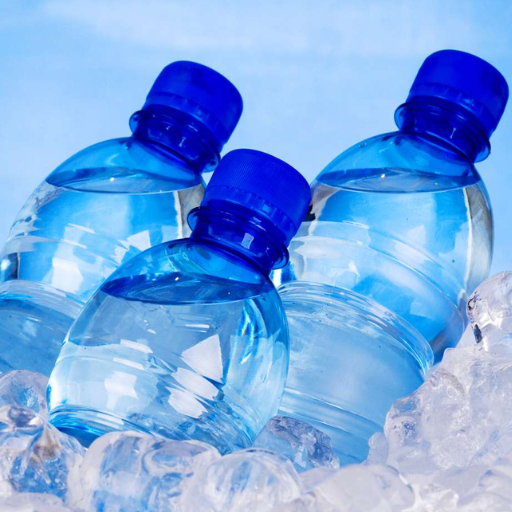
Codes 2, 4, and 5 stand for HDPE, LDPE, and PP respectively, and are marked safe for containing drinking water. These plastics are sturdy, heat-stable, and have a low probability of releasing chemicals. As the name suggests, BPA-free bottles are made to avoid exposure to bisphenol-A. The guidelines set forth suggest avoiding bottles marked with codes 3 (PVC) and 7 (Other) as these are possibly the most hazardous. To ensure safety, check the labels against guidelines for proper use.
Considered Safe Plastic Materials for Water Containers
When selecting safe plastic materials for water containers, prioritize those labeled as food-grade and free from harmful chemicals like BPA. Commonly recommended plastics include:
Polyethylene Terephthalate (PET or PETE) – Often used in disposable water bottles, PET is lightweight and generally safe for single-use, though it’s not designed for long-term reuse due to potential bacterial buildup.
High-Density Polyethylene (HDPE) – Recognized for its durability and resistance to chemicals, HDPE is widely used for reusable bottles and considered safe for repeated water storage. It’s also less likely to harbor odors or flavors.
Polypropylene (PP) – Known for its toughness and lightweight nature, PP is a safe option for water containers, commonly used in bottle caps and twist-on lids.
These materials exhibit minimal leaching risks, as long as they are used under appropriate conditions – avoiding heat exposure and adhering to manufacturer guidelines. Recycling labels like #1 (PET), #2 (HDPE), and #5 (PP) help ensure safe options. Always verify the product’s specifications to align with safety standards.
Risks of Polycarbonate Plastic in Water Bottles
Concerns have been raised regarding polycarbonate plastic, which is identified by the recycling label #7, due to its ability to leach the chemical Bisphenol A (BPA) into liquids under certain conditions. BPA being an industrial chemical is known to be associated with several health risks as research has indicated the possibility of exposing people to risks of disrupting hormones, causing developmental problems, and long-term risks of heart diseases and metabolic problems. The possibility of leaching increases when polycarbonate bottles are heated, either by direct sunlight, boiling water, or microwaving. Regardless of some polycarbonate bottles being advertised as reusable and durable, wear and tear can compromise the structural integrity over time, which further raises safety issues. While most manufacturers have moved towards BPA-free options, caution is still warranted by checking the product’s labeling for safety concerning prolonged use of the container.
Comparing Plastic Water Bottles to Glass Bottle Alternatives
There are multiple reasons why glass bottles may be better compared to plastic. First, glass is non-porous and chemically inert, meaning it does not leach any soluble chemicals into water even when heated. This sets it apart from many plastic bottles, especially those made out of BPA or some other toxic plastic. In addition, cleaning and disinfecting glass bottles is easier because they do not retain odors or residues as plastics do. Though glass is more susceptible to shattering and is heavier than plastics, advanced silicone sleeves have increased the everyday durability of glass bottles. From the perspective of safety and risk of environmental damage, as well as the longevity of the product, glass bottles seem to be the ideal choice for those looking to maintain a healthier lifestyle and reduce their impact on the environment.
How Are Plastic Water Bottles Made?
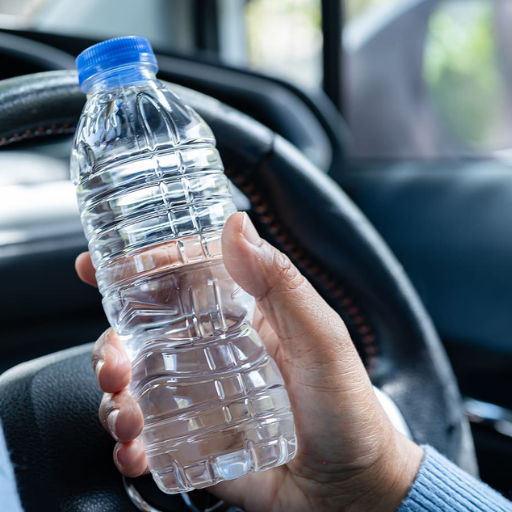
Plastic water bottles are primarily made using a material called polyethylene terephthalate (PET), which is lightweight, durable, and recyclable. The process begins with raw PET pellets, which are melted and molded into small preforms resembling test tubes. These preforms are then heated and blown into molds to achieve their final bottle shape using high-pressure air. After molding, the bottles are cooled, trimmed, and inspected for quality before being sent to packaging facilities. This efficient manufacturing method allows for mass production while minimizing material waste.
The Manufacturing Process of PET Plastic Water Bottles
The production of PET plastic water bottles involves several key steps, combining precision and efficiency. First, the process begins with the creation of PET polymers, derived from crude oil and natural gas. These polymers are processed into small, solid pellets known as resin. The resin is then heated and injected into molds, forming preforms, which are small and tubular in shape.
Once the preforms are created, they are reheated and placed into larger molds to be blow-molded using high-pressure air. This step expands the preforms into their final bottle shape, ensuring strength and uniformity. After molding, the bottles are rapidly cooled to maintain their structure, then trimmed to remove any excess plastic.
The final steps include quality control checks to ensure the bottles meet industry standards, followed by transportation to packaging facilities. This streamlined method emphasizes recyclability and reduces material waste, making PET an efficient choice for producing lightweight, durable, and reusable water bottles.
Materials Used in Water Bottle Production
The production of water bottles involves a variety of materials that are selected depending on the type of bottle and its purpose. For single-use bottles, the most widely available material is polyethylene terephthalate (PET), which is a recyclable plastic that is lightweight, impact resistant, and durable. Another type of plastic, high-density polyethylene (HDPE), is commonly used in reusable water bottles; it is stronger than PET and more resistant to chemicals. For sustainable bottles, the available options include stainless steel and aluminum, which have minimal environmental impact because they are long lasting and reusable. While glass bottles are eco-friendlier as they offer purity and resistance to contamination, they are fragile and heavy. Furthermore, plastics made from renewable sources such as sugarcane and corn can serve as functional substitutes for traditional plastics, lessening the dependence on fossil fuels. Each material is chosen to balance cost and durability, as well as environmental impact.
What Are the Environmental Impacts of Plastic Water Bottles?
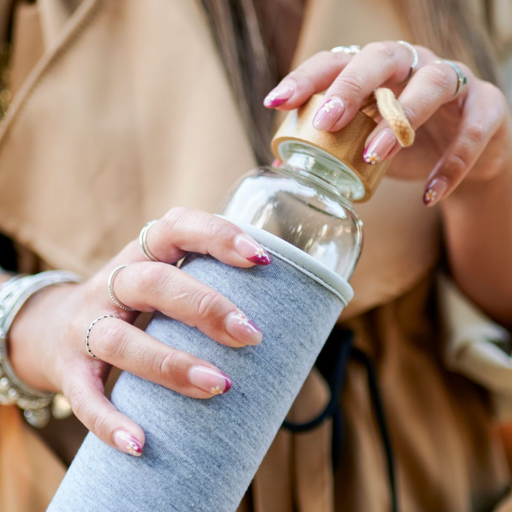
Plastic water bottles have significant environmental impacts, primarily due to their production, usage, and disposal. The manufacturing process of plastic bottles consumes large amounts of fossil fuels and releases greenhouse gases, contributing to climate change. Once used, many bottles end up in landfills or as litter, where they can take hundreds of years to decompose, often breaking down into microplastics that contaminate soil and water. Additionally, plastic waste threatens marine and wildlife ecosystems, as animals may ingest or become entangled in discarded plastics. Recycling efforts, though beneficial, are often insufficient, with only a small percentage of plastic bottles being effectively recycled. These factors underscore the urgent need for reducing single-use plastics and adopting sustainable alternatives.
The Number of Plastic Water Bottles Made Annually
Globally, it is estimated that over 500 billion plastic bottles are produced each year, with approximately 1 million bottles purchased every minute. The demand continues to increase, driven largely by convenience and accessibility. This overwhelming production contributes significantly to plastic waste, as many bottles are not recycled and ultimately pollute land and ocean environments. The sheer volume of plastic bottles underscores the pressing need for systemic changes in production, consumption, and waste management strategies.
Recycling Plastic Water Bottles: Process and Challenges
Recycling plastic water bottles involves several steps, starting with collection and sorting. Bottles are typically gathered through curbside recycling programs or collected at designated centers. Once collected, they are sorted by type of plastic, cleaned to remove any residues, and shredded into small flakes or pellets. These materials are then melted down and remolded into new products, such as polyester fibers for clothing, packaging materials, or even new bottles.
However, there are significant challenges in this process. Contamination is a major issue—when bottles are discarded with food waste or mixed with non-recyclable materials, it can disrupt recycling systems and reduce efficiency. Additionally, not all plastics are recyclable, and even when they are, economic and logistical barriers often limit the success of recycling efforts. These limitations, combined with the overwhelming volume of plastic waste generated, highlight the need for improved recycling technologies, better consumer education, and transitioning to more sustainable packaging solutions.
Alternatives to Single-Use Plastic Water Bottles
When it comes to reducing reliance on single-use plastic water bottles, there are several effective alternatives. Personally, I find reusable water bottles made from stainless steel or glass to be the most practical and eco-friendly options. These bottles are durable, safe, and don’t leach harmful chemicals into the water, making them a healthier choice as well. For convenience, collapsible silicone water bottles are also a great option when space is limited.
Another approach I’ve adopted is investing in water filtration systems, either at home or portable versions, which ensure access to clean drinking water without the need for bottled water. Additionally, supporting refill stations in public places has made it easier to stay hydrated while on the go without creating waste.
Lastly, I’ve started exploring packaging alternatives like boxed water or biodegradable bottles when absolutely necessary. These options, while not perfect, are steps toward cutting down plastic waste significantly. Collectively, these alternatives allow for meaningful progress in reducing the environmental impact of single-use plastics.
References
Frequently Asked Questions (FAQ)
Q: What are the main types of plastic water bottles used for packaging?
A: The main types of plastic water bottles used for packaging include those made from polyethylene terephthalate (PET), high-density polyethylene (HDPE), polyvinyl chloride (PVC), and low-density polyethylene (LDPE). Each type of plastic has its own properties and uses.
Q: How can I identify the type of plastic used to make a water bottle?
A: Most plastic water bottles have a recycling symbol with a number on the bottom. This number, known as the resin identification code, indicates the type of plastic used to make the bottle. For example, PET is identified by the number 1.
Q: Are plastic water bottles safe to reuse?
A: Certain types of plastic water bottles, such as those made from PET, are safe to reuse if they are cleaned properly. However, it’s important to know what plastic type is considered safe to reuse and to be aware of any signs of wear or damage.
Q: What is PET plastic and why is it commonly used for bottled water packaging?
A: PET plastic, or polyethylene terephthalate, is a lightweight and durable material commonly used for bottled water packaging. It is 100% recyclable and provides a strong barrier to protect the contents, making it ideal for water companies to use PET plastic for their products.
Q: Can plastic water bottles made from PVC plastic be safely reused?
A: PVC plastic, identified by the recycling number 3, is generally not recommended for reuse in water bottles as it can release harmful chemicals. It is often used for products like laundry detergent bottles and should be approached with caution for food or drink containers.
Q: Why are some plastic water bottles made from HDPE considered safe?
A: HDPE, or high-density polyethylene, is a plastic type that is considered safe for reuse because it is resistant to chemicals and does not easily leach substances into foods or beverages. It is often used for milk jugs and juice bottles.
Q: Are there alternatives to plastic water bottles that are safer for reuse?
A: Yes, alternatives to plastic water bottles include containers made from glass or stainless steel. These materials do not leach chemicals and are safe to reuse, making them a popular choice for those concerned about the safety of plastic containers.
Q: What should I look for to ensure the plastic used in making water bottles is safe?
A: To ensure the plastic used in making water bottles is safe, check for the resin identification code, avoid plastics known to leach harmful chemicals, and choose bottles packaged in plastic types that are approved for food and beverage use, such as PET or HDPE.
Q: Why are some water bottles usually made from LDPE?
A: LDPE, or low-density polyethylene, is flexible and resistant to moisture, making it suitable for squeezable bottles and other flexible packaging. It is usually made for products that require this type of flexibility and durability.


